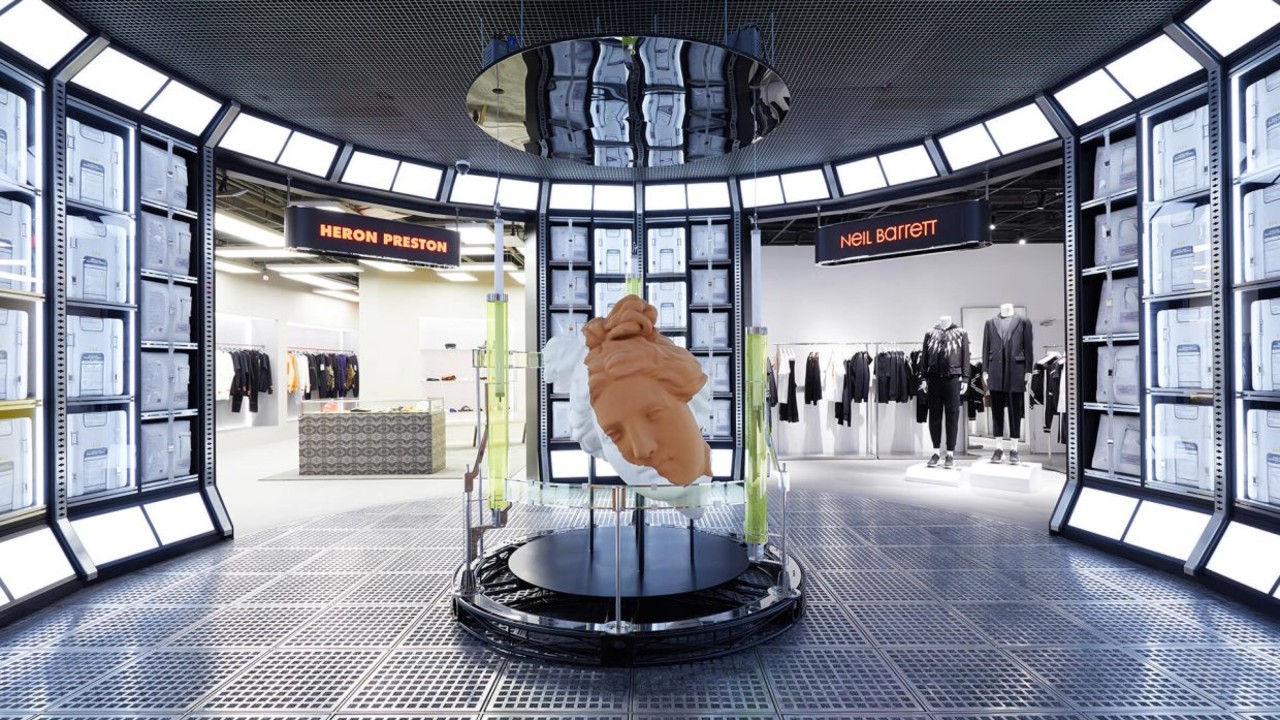This post originally appeared on Jing Daily, our sister site.
In December 2019, one of China’s leading retail shopping malls had a flock of sheep roaming its lobby. The sudden appearance sparked a viral debate on Chinese media — were they real or simulated ? — the social chatter earned Beijing SKP-S shopping mall nationwide recognition for creating an innovative environment.
The team behind this deception? Creative eyewear brand Gentle Monster and its CEO Hankook Kim. Under the theme, “Digital-Analog Future,”Beijing SKP-S seemed to blur the lines of retail and art by featuring wild and futuristic installations throughout its space.
Ever since, the trend of art-inspired retail spaces has continued across China’s department stores.
This hybrid approach to art and commerce isn’t entirely new in retail. In December 2009, Adrian Cheng founded the “museum-retail” concept K-11, which became China’s first art mall and is rooted in displaying local artists from the K-11 Art Foundation around its spaces. Launched in Hong Kong, the K11 project has sites in Shanghai, Wuhai, Shenyang, and Guangzhou with more openings anticipated.
The Shanghai TX Huaihai | Youth Energy Center propelled this model even further. Its concept of “curetail” sees art and culture as tools helping brands to develop better storytelling. With curation and retail increasingly intersecting in China’s shopping malls, understanding localization and what resonates with young Chinese consumers is essential.
Curatorial strategies offer consumers alternative visual identities
When K11 Shanghai opened the Claude Monet solo exhibition in 2014, the artist’s work drove offline traffic and brought significant awareness in the city. Though sales increased by 20 percent during that period, most of the profits came from art-related gifts and merchandise rather than brands and retailers. This offline traffic disappeared once the exhibition ended, leading retailers to understanding that leaning on blockbuster exhibitions for in-store traffic wasn’t sustainable.
Retail strategies have since focused on curatorial strategies that contextualize artworks within retail spaces to engage customers. According to Gentle Monster’s Kim, the key to designing these spaces is to “break away from consumer expectations and constantly surprise them with new ones,”.
For SKP-S’ “Digital-Analog Future”, it introduced a theatrical shopping experience by mixing the futuristic with the nostalgic and presented brand names on a black LED lightbox in red font, offering visual consistency within a fabricated world of absurdity.
Here, the overall curation strategy is to tell brand stories in the language of young consumers and encourage them to spend more time in mall stores.
Lifestyle Retail Fulfills Consumers’ Social Needs
Gen Zers may spend considerable time on social media, but they are still driven by physical social interactions. When it comes to offline activities, shopping is king, according to a report on Gen Zers by Hylink Digital Solutions and Weibo. Equally important is the trend of checking into “Instagrammable” places through posts on social media, a habit known in China as da ka (打卡). Favoured places include shopping malls, immersive art exhibitions, and unique photogenic settings.
The “Wild Cinema” project in Shanghai’s TX Huaihai mall is one of the trendiest “da ka” destinations in the city. Mounted in tandem with the Shanghai-based contemporary art fair ART 021, the project features public artworks and installations from established local artists like Lu Pingyuan and Xu Zhen, as well as international artists Anish Kapoor and Amalia Pica.
At a time when offline retail is only tentatively recovering from coronavirus, TX Huaiha’s retail curation has succeeded in generating interest. The multi-brand streetwear shop Innersect has gained traction on Little Red Book (particularly its “China Now” section which features homegrown independent fashion labels) and visitors have flocked to snap selfies with curated artworks. The opening weekend drew 11,000 visitors, according to a TX Huaihai spokesperson.
The “da ka” culture is specific to Gen Zers and reveals how younger consumers value validation via social posts. Whether it’s the mixture of luxury and futurism at Beijing SKP-S or the youth culture spectacle created by Shanghai TX Huai, experiencing art in a retail context is a rising trend and one offering Gen Zers a chance to capture the social cache they crave.



